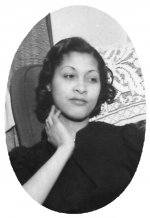capture or flash? images in the age of general overexposure
capture or flash? images in the age of general overexposure
My thanks go to SolaresLavarre for the interesting reference, and, more significantly beyond that, asking us to talk about the meaning of snapshots. I myself wouldn't pretend to shoot anything but.
But on to this essay (I hope we can do another thread where the value of snapshots is discussed without reference to this article but to our own experiences). It is as much a review of an exhibition (and an event with which Americans are obsessed) as an essay on the practice and theory of snapshots. This is what frames the discussion of "snapshots" in this instance
The discussion of the everyday (= snapshots) juxtaposed against the lengthy discussion of political catastrophe certainly falls within the problem noted by Walter Benjamin 70 years ago: we are faced generally with a ubiquitous aestheticization of politics. What Benjamin could not have foreseen was not just the wild proliferation of images we witness today (cited by the exhibition's curator), but also the fact that the very concept of "image" itself has been profoundly and fundamentally displaced or challenged by the advent of digital and virtual technologies. I think it was sitemistic who reminded us in another thread that the fundamental constitutive element of an image is that it must have a frame. In other words, the frame marks a line between the image and the reality it is supposed to be drawn from. Of course this line has always been subject to intense debate and conflict. But today are we not in the unprecedented situation in which the line itself can no longer be recognized as such? In fact, outside the frame of the image is just another image.
This idea of the "image outside the image" may be dangerous but it contains still a possibility for collective compassion and action. I think this is exactly what the author of the article, Dr. Louis Masur, has in mind by asking us to consider the potential behind "the devious lie of the snapshot."
For that reason, it is so much more disappointing to read how he chooses to focus our attention nevertheless on a *moral* question in the relation (he calls it
capture, a word I really think needs to be rejected) between the catastrophic event and the image rather than a rich and complex site of where the
flash of politics, economy, aesthetics and individual singularities are all
exposed. This moral turn is typical of the overwhelming tendency to
overexposure that we find in images today.
More and more, this is what images are being used for: to mobilize people around "depoliticized humanitarian" causes that are really pretexts for intervention on behalf of the imperial coalition. The function invariably is to mask something (not a "truth" but a possibility for the collective invention of a compassionate future) by means of overexposure. Problems such as the legacy of colonial violence and its political and economic consequences are problems that coalesced over decades, if not centuries. Yet when the British and American press turn to discussion of contemporary Iraq, the problems are always reduced to a time frame and a story line that invariably excludes this history and its contemporary prolongation: there is only talk about the brutal Hussein regime and ethnic conflict. No mention of the very precise and detailed history of British colonial techniques of government and their prolongation into the postcolonial period. That cropping out of the picture is also one of the "catastrophes" that should be included under the sign of 9/11. A responsible response to these sorts of problems cannot be formulated exclusively in the moralizing temporality of "911 emergency response".
Snapshots usually show best a certain relationship in which the photographer herself is involved. That seems to me a fundamental clue...
Louis Masur said:
"The devious lie of a snapshot" is a marvelous phrase. It is not the photographer who is devious, but the nature of the snapshot itself, which isolates and freezes action, disconnecting it from context and sequence. Photographs seduce us into believing that they are objective records, but, in fact, all images are interpretations, texts that must be read...What every photographer captures is of the moment and beyond it, random and in odd ways determined, fixed yet always changing.


